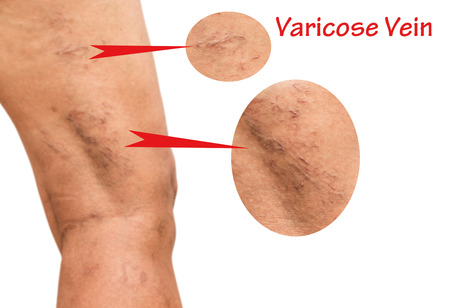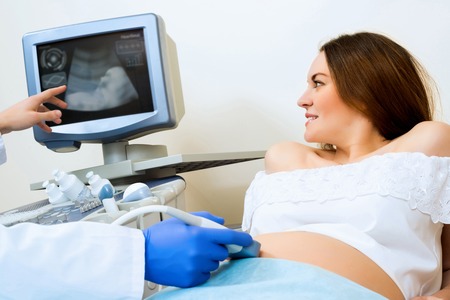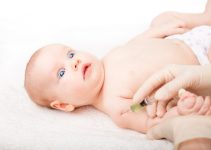What are Varicose Veins?
The circulatory system of the body has two types of blood vessels – arteries and veins. Arteries carry pure oxygenated blood from the heart to the various parts of the body where as veins carry the impure blood from the various systems back to the heart. These veins are equipped with one way valves due to which the blood can flow only in one direction. The presence of valves along with the muscle contraction in the legs, help the veins to return the blood to the heart against gravity. When these valves fail, the blood instead of moving upwards; begins to get stagnated in the vein itself. This makes the veins swollen, prominent and bluish in appearance and these are called as varicose veins. This phenomenon can affect any vein of the body but is more commonly seen in the veins of the lower limbs because of gravitational reasons and the pressure on the legs as they bear the entire weight of the body.
Causes of Varicose Veins

The major cause of varicose veins is the failure of the valves present within the veins. The venous insufficiency in turn leads to the collection of blood in the veins. The major predisposing factors are:
- Pregnancy
- Congenital valve diseases
- Menopause
- Professions which demand individuals to stand for long hours. Example – traffic police, teachers etc
- Obesity – The excess body weight puts pressure on the veins of the legs
Females are more predisposed to getting varicose veins because of hormonal changes occurring in pregnancy, menstruation and menopause. Also taking hormone therapy or birth control pills puts them at a greater risk of getting vascular diseases.
Signs and Symptoms of Varicose Veins
Varicose veins generally begin as a painless swelling of the veins. If care is not taken, then the condition worsens and pain symptoms kick in and finally the vascular symptoms like ulceration appear. The common signs and symptoms are:
- Dark blue bulging veins in legs
- Veins which are swollen and appear as spiral blue cords on the back of the legs
- Dull aching pain in the legs
- Pain that is aggravated after sitting for long hours
- Spider veins – Small reddish blue veins in the lower limbs
- Throbbing sensation in the legs
- Bleeding from the affected veins
- Itching on the affected leg
- Varicose ulcer at the site of the varicose veins – Skin color changes, inflammation and ulceration at the affected site are an indication of a serious vascular disorder (disease of the blood vessels)
Diagnosis of Varicose Veins
The diagnosis is usually based on the basis of the patient’s history of pain or visible veins on the legs, presence of occupational risk factors and a thorough physical examination.
The diagnosis is confirmed and the extent of the disease can be assessed by performing an ultrasound of the lower limbs which will give a fair idea about the condition of the valves.
Varicose Veins Treatment

Treatment does not involve hospitalization and is generally done on an outpatient basis. It involves early diagnosis, taking care of the risk factors and some lifestyle modifications.
Compression stockings for varicose veins are the first treatment that is given to a patient with varicose veins. They are tight stockings which need to be worn the whole day and they squeeze the leg muscles and aid in the upward movement of the blood. These stockings are available easily at all medical stores.
Sitting with legs raised and avoiding long standing also help in reducing the pain and discomfort caused due to varicose veins.
Severe cases not responding to compression stockings are treated with sclerotherapy where the affected vein is injected with a dye that scars the veins and closes it.
Another most recent treatment option is endovenous laser ablation where the affected vein is treated with laser beams and this causes the vein to dry up and close. No stitches or invasive procedure is involved here.
In very severe cases surgery may be needed. The surgery done for varicose veins is called vein stripping which is done under anesthesia and needs a recovery time of upto six weeks. Vein surgery is however less used these days as other non invasive procedures are available.
Prevention of Varicose veins
The lifestyle modifications that help to reduce varicose veins are:
- Avoid standing for long hours
- Exercise the leg muscles regularly
- Sit with legs supported on a chair
- Avoid keeping the legs hanging down
- Lose weight and maintain a healthy life style.



After I gave birth to my second child, some varicose veins started to appear on my legs. So my mother, who also developed varicose veins recommended me venorid treatment, and I´m amazed by the results! And also, I’ve been exercising 4 days a week, this helps to reduce and prevent varicose veins.